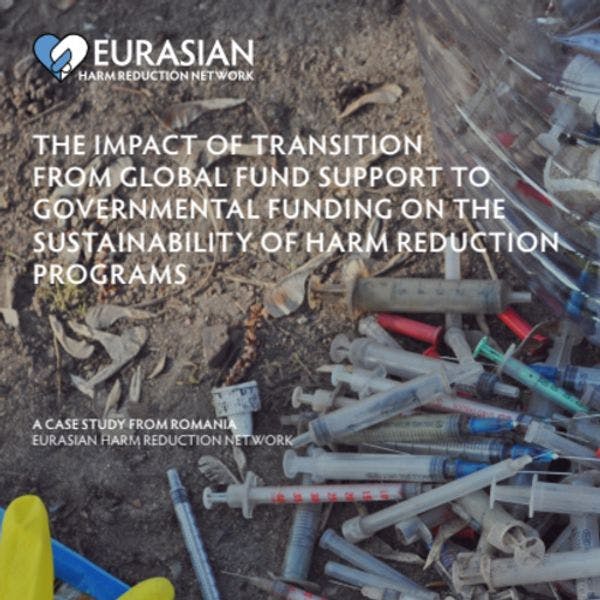The impact of transition from Global Fund Support to governmental funding on the sustainability of harm reduction programs: a case study from Romania
Becoming a member of the European Union in 2007, Romania has seen its Gross Domestic Product (GDP) rise 2.8% in 2014 and 3.7% in 2015, one of the highest in the EU with the World Bank categorising the country as ‘upper middle income’ but with the Government only putting 13% of its resources towards the health sector in 2014. Although Gross National Income (GNI) per capita in 2014 was $9,520, one-quarter of the population were reported to be living below the national poverty line.
Romania has a relatively low - at under 1% - but steadily increasing HIV prevalence among the adult population with the disease concentrated in key populations, with 13,766 people living with HIV/AIDS in the country as of the end of 2015. Agreements have been signed by the Global Fund for HIV/AIDS ($37,671,819) between June 2003 and June 2010, and for Tuberculosis (TB) ($40,058,225) between June 2003 and 31 March 2018.
Global Fund support of HIV ended in June 2010 due to the relatively low burden of the disease and the economic growth of the country but with no transition plan in place for domestic and other resources to sustain the interventions, resulting in a collapse in services, especially the availability of needle/syringe programmes (NSP) for people who inject drugs (PWID). This lack of funding coincided with a dramatic increase in HIV among PWID especially in the capital, Bucharest, whereby in 2009 - prior to the end of Global Fund support - HIV prevalence among PWID was estimated at 1.1% but then - following the end of the Global Fund HIV grant - rose dramatically to 6.9% in 2012 and spiked at 53% in 2013.
Thanks primarily to the response of non-governmental organisations (NGOs) and funding from the EU (structural funds), Norway and various private foundations, some NSP services were reestablished after the exit of the Global Fund but not at the scale needed, with HIV prevalence among PWID falling back somewhat to 21.4% in 2014; prevalence of HIV among PWID aged 25-29 years and 30-34 years was the highest in 2015 at 28% and 27%, respectively.
In comparison, HIV prevalence among men who have sex with men (MSM) and sex workers in 2015 was 16% and 4.6%, respectively, although some members of civil society believe the rates to be far higher owing the lack of access by MSM and SW to VCT services across the country. In addition, viral hepatitis C (HCV) is rampant in the PWID community with prevalence in 2011 at 79% - the highest rate in Europe - compared to 3.2% among the general population.
Keep up-to-date with drug policy developments by subscribing to the IDPC Monthly Alert.
Downloads
Regions
Related Profiles
- Eurasian Harm Reduction Network (EHRN)
